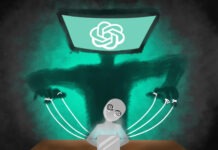The second season of Netflix’s original series “House of Cards” seems to view its story with actual contempt. It knows where it wants to go, but has little interest in getting there. It’s like watching a game of chess where one of the players whines incessantly every time it has to move.
Shortly after his promotion to the Vice Presidency, former Congressman and villain protagonist Frank Underwood (Kevin Spacey) turns his focus from the office of the VP to the Oval Office itself. Due to this change, the show undergoes a shift in focus, causing season two to feel a tad fragmented. The first third of the season wraps up everything from season one, the middle is a transitionary period and the final third takes all the new concepts and runs with them to their natural conclusion.
This is not a bad format on its own and the transition feels natural, but it’s also tensionless. Partially because the characters’ respective motivations only become clear somewhere around episode 12 (of 13), but also because the show doesn’t seem very invested in its own conflicts.
A B-plot involving a team of journalists? A lawsuit involving Claire Underwood (Robin Wright)? All dropped because they didn’t fit the plot. Some character development for BBQ master Freddy (Reg E. Cathey)? This doesn’t amount to much, and only exists to further the plot. Plot, plot, plot, plot. That’s all “House of Cards” really cares about, forgetting entirely about the story. Without characters, there is no story, and there are no characters here; only chess pieces.
“House of Cards” is also a very cartoonish show. This was not as much of an issue in the first season when the stakes were lower and everything was quieter, but it’s far more egregious in season two. The symbolism is aggressive, everyone speaks in thinly veiled threats, and the characterization is done in broad strokes.
And there’s nothing inherently wrong with real life cartoons – “30 Rock” and “Burn Notice” felt like some TV executive wanted to skip the part of comic book adaptations where there’s a comic to adapt – but “House of Cards” struggles under the weight of its ambitions.
With a color scheme based heavily in blues and a piano-heavy score, “House of Cards” wants to wear the clothes of a slick political thriller, but when men are snapping the necks of parrots to make a point, it’s hard not to laugh at the dissonance.
Spacey as Underwood is still a delight but with the expansion of the cast, it feels like he’s a little underused. For one, he doesn’t speak directly to the audience as much as he once did. This change is done intentionally in episode one and it works for the premiere, but there were times where the show needed a direct address from good ol’ Frank.
The rest of the cast is fine. No standouts, but nobody’s exactly phoning in their roles either. A more coherent show – or even the “House of Cards” that premiered last year – would do wonders with this group of people.
It opens strongly and ends well enough, but the meat of “House of Cards” season two is chewy at best. Perhaps starting with the series’ best episode was a misstep. Or maybe it was alternating between cheesy nonsense and ponderous backstabbing for 12 episodes.
Either way, it looks like “Orange is the New Black” is currently the best Netflix-exclusive show.
MIke Cosimano is a first-year psychology major. His Occidental Weekly blog, “The Broken Remote,” runs every Friday on occidentalweekly.com. He can be reached at cosimanowhite@oxy.edu or on Twitter @WklyMCosimano.
![]()






































[…] 'House of Cards' season two review: Toppled – February 28, 2014 […]